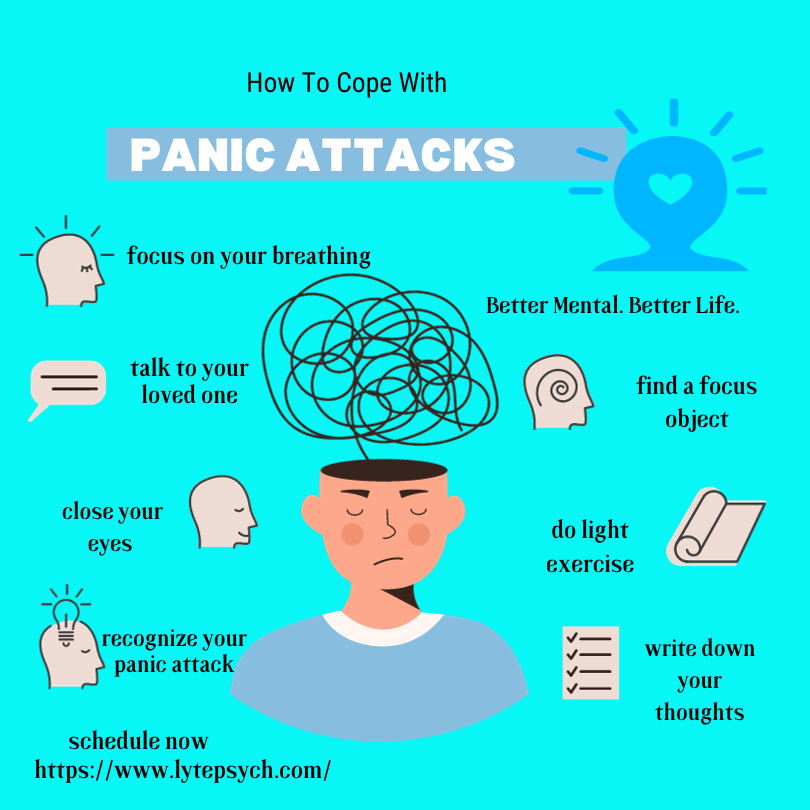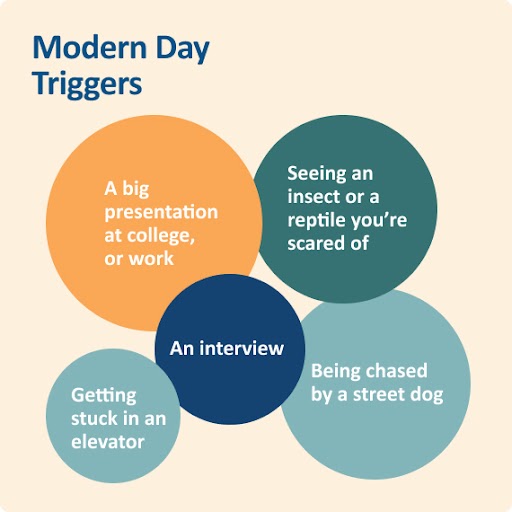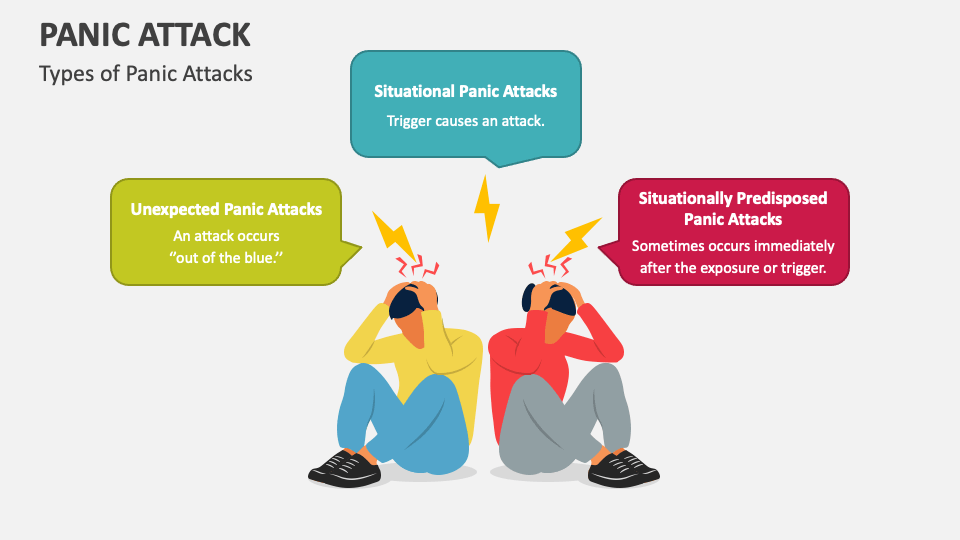Uncover the mysterious triggers behind panic attacks, from unexpected stressors to hidden fears that can turn your world upside down.
Table of Contents
- Understanding Panic Attacks
- Common Triggers of Panic Attacks
- What Happens in Your Brain During a Panic Attack?
- The Role of Environment and Lifestyle
- How to Know if Someone Is Having a Panic Attack
- Helping Someone During a Panic Attack
- Managing Your Own Panic Attacks
- When to Get More Help
- Conclusion
- Frequently Asked Questions (FAQs)
Welcome, young explorers! Today, we’re about to embark on a fascinating journey into the world of panic attacks and how they can affect our mental health. Have you ever heard about panic attacks and wondered what they truly mean for our well-being? Well, get ready to uncover the mysteries behind these intense experiences that many people face.
It’s essential for us to understand what causes panic attacks and how they impact our mental health. By unraveling these aspects, we can learn valuable coping strategies to navigate through these challenging moments. So, grab your curiosity and let’s dive into the world of panic attacks and mental health together!
Understanding Panic Attacks
In this section, we will dive into what panic attacks are and how they can affect us, including the symptoms that come with them.
What Is a Panic Attack?
A panic attack is when our bodies and minds feel super scared and nervous for no clear reason. This can make us feel like our hearts are racing, we can’t breathe well, and our bodies might shake or feel dizzy. It’s like our minds are sending out danger signals even if nothing dangerous is really happening.
Symptoms of Panic Attacks
When a panic attack hits, we might feel sweaty, tingly, or have a racing heart. Sometimes, we might even feel like we’re going to faint. These symptoms can be really scary when they happen, but it’s essential to remember that they won’t last forever.
Common Triggers of Panic Attacks
Feeling super worried or anxious can often lead to a panic attack. When you have a lot of thoughts racing through your mind and you feel scared or nervous about something, it can trigger a panic attack. Your body might respond by feeling like your heart is beating really fast, you can’t catch your breath, or you might start sweating. These physical reactions can make you feel even more anxious, which can make the panic attack worse.
Stressful Events
Tough times in life, like going through a big change, having a lot of pressure on you, or dealing with a difficult situation, can also be triggers for panic attacks. When you’re under a lot of stress, your body can react by going into panic mode. Your brain might perceive the stressful event as a threat, even if it’s not a real danger, and this can lead to a panic attack. It’s like your body’s alarm system goes off, and you start feeling all the symptoms that come with it.
What Happens in Your Brain During a Panic Attack?
It’s important to know what happens inside your brain when a panic attack starts happening.

Image courtesy of medium.com via Google Images
Brain Chemistry
When you have a panic attack, your brain’s chemistry gets a little bit crazy. This means that the special chemicals in your brain, called neurotransmitters, stop working as they should. These neurotransmitters are like messengers that help your brain communicate with the rest of your body.
During a panic attack, the neurotransmitters go into overdrive, sending too many signals at once. This can make you feel really scared, worried, or panicky even if there’s no real danger around you.
Fight or Flight Response
Have you ever heard of the “fight or flight” response? When your brain senses danger, it can trigger this response to protect you. During a panic attack, your brain mistakenly thinks you’re in danger when you’re not, and it goes into fight or flight mode.
That’s why your heart might start racing, your breathing gets faster, and your muscles feel tense during a panic attack. Your brain thinks it needs to help you either fight off a danger or run away from it, even though there’s no real threat.
The Role of Environment and Lifestyle
Understanding how stress and anxiety play a role in triggering panic attacks is crucial. Your surroundings and daily habits can have a big impact on your mental health. Let’s dive into how environment and lifestyle can influence the occurrence of panic attacks.
Environmental Stressors
Have you ever felt nervous in a crowded place or scared when it’s too noisy? These are examples of environmental stressors that can trigger panic attacks. Your environment plays a significant role in how you feel. Being in a situation that makes you uncomfortable or overwhelmed can lead to heightened stress and anxiety, making you more susceptible to experiencing a panic attack.
Unhealthy Habits
Not taking care of yourself can also contribute to the likelihood of having a panic attack. Simple habits like not getting enough sleep, skipping meals, or not exercising regularly can impact your mental well-being. When your body is not in a healthy state, it becomes more vulnerable to stress and anxiety, increasing the chances of a panic attack occurring. Taking care of your body and mind by practicing self-care and healthy habits can help reduce the risk of experiencing panic attacks.
How to Know if Someone Is Having a Panic Attack
If someone around you is having a panic attack, it’s essential to be able to recognize the signs so you can offer support and help. Here are some clues to look out for:

Image courtesy of www.lytepsych.com via Google Images
Recognizing the Signs
1. Physical Symptoms: The person may experience rapid heart rate, sweating, trembling, and difficulty breathing. They might feel dizzy, nauseous, or have chest pain.
2. Emotional Signs: They could appear frightened, overwhelmed, or like they’re out of control. They may be crying, screaming, or looking extremely anxious.
3. Behavioral Indicators: The individual might try to escape the situation, pace back and forth, or rock back and forth, trying to self-soothe.
4. Verbal Cues: Listen for phrases like “I can’t breathe,” “I feel like I’m dying,” or “I need to get out of here.” These statements can be a strong indication of a panic attack.
5. Other Signs: They may feel disconnected from reality, have tunnel vision, or experience a sense of impending doom.
Remember, every person may experience panic attacks differently, so it’s crucial to be understanding and patient when offering help.
Helping Someone During a Panic Attack
Here we will learn kind ways to help friends if they have a panic attack.
Staying Calm
It’s important to stay chill so you can help your friend feel better. When someone is having a panic attack, they might be feeling scared, so it’s crucial for you to remain calm and reassuring. Take a deep breath and remind yourself that you’re there to support them.
| Triggers | Description |
|---|---|
| Stress | High levels of stress can trigger panic attacks in susceptible individuals. |
| Trauma | Experiencing a traumatic event can lead to panic attack episodes. |
| Phobias | Specific phobias can trigger panic attacks when confronted with the fear-inducing stimulus. |
| Physical Illness | Underlying physical conditions can exacerbate panic attack symptoms. |
| Medication | Certain medications or their side effects can trigger panic attacks. |
Supportive Actions
We’ll go over things you can do, like talking gently, that can help someone feel safe. You can start by speaking softly and using comforting words. Let them know that you are there for them and that it’s okay to feel how they’re feeling. You may also offer to hold their hand or give them a hug if they are comfortable with that.
Managing Your Own Panic Attacks
This part is all about ways you can stop a panic attack if you feel one coming on.

Image courtesy of www.manntalks.org via Google Images
Breathing Exercises
We will practice some easy breathing tricks that can help calm you down. When you start feeling anxious or panicky, try taking slow, deep breaths. Inhale through your nose for a count of four, hold the breath for a moment, then exhale slowly through your mouth. Repeat this process a few times until you start to feel more relaxed.
Relaxation Techniques
Let’s look at stress-busting activities that can stop panic attacks from happening. One effective technique is progressive muscle relaxation. Start by tensing up a group of muscles in your body tightly for a few seconds, then release them and feel the tension melt away. You can work through different muscle groups, like your hands, arms, shoulders, and so on. This practice can help your body and mind unwind, easing the feelings of panic.
When to Get More Help
Sometimes, dealing with panic attacks can be tough, and it’s okay to seek extra support when needed. Here we will discuss when it might be a good idea to ask for more help.
Talking to a Trusted Adult
If you’re feeling overwhelmed by panic attacks, talking to someone you trust can make a big difference. This might be a parent, teacher, or another grown-up who can listen to your feelings without judging you. They can offer comfort and help you figure out ways to cope with your anxiety. Opening up to a trusted adult can lift a weight off your shoulders and make you feel less alone in dealing with panic attacks.
Seeing a Doctor or Therapist
If panic attacks are happening a lot and affecting your daily life, it may be time to see a doctor or therapist who specializes in mental health. These professionals can provide you with tools and techniques to manage your anxiety and panic attacks more effectively. They might suggest therapy, medication, or other treatments to help you feel better. Seeking help from a doctor or therapist doesn’t mean there’s something wrong with you—it means you’re taking charge of your mental health and well-being.
Conclusion
In conclusion, we have delved into the world of panic attacks, exploring what they are and how they can affect our mental health. We have learned about the symptoms that come with a panic attack and common triggers like anxiety and stress. Understanding the brain chemistry and the fight or flight response during a panic attack has shed light on what happens in our bodies during these episodes.

Image courtesy of www.collidu.com via Google Images
We have also discussed the importance of our environment and lifestyle in managing panic attacks. Environmental stressors and unhealthy habits can play a significant role in triggering these episodes. Recognizing the signs of a panic attack in ourselves or others is crucial, as is knowing how to provide supportive actions for someone experiencing one.
Furthermore, we have explored coping strategies to manage panic attacks, such as breathing exercises and relaxation techniques. Knowing when to seek additional help, whether through talking to a trusted adult or consulting a doctor or therapist, is essential in ensuring proper management of these episodes.
By learning about panic attacks, their triggers, symptoms, and management strategies, we can empower ourselves to navigate these challenging experiences with resilience and support. Remember, you are not alone in this journey, and help is always available.
Frequently Asked Questions (FAQs)
Here we’ll answer some common questions kids might have about panic attacks.
Can kids have panic attacks too?
Yes, kids can have panic attacks just like adults. Sometimes, when kids feel super worried or scared, their bodies and minds might react in a big way, causing a panic attack. It’s important to remember that it’s okay to feel this way, and there are ways to help you feel better.
How long do panic attacks usually last?
Panic attacks can vary in length, but they typically last between 5 to 20 minutes. During that time, you might feel scared, shaky, or like you can’t breathe properly. Remember, even though panic attacks can feel intense, they will pass, and you will start to feel better.
Can you stop a panic attack before it happens?
While it may be challenging to stop a panic attack from happening completely, there are things you can do to help manage and reduce the chances of having one. Learning coping strategies, like deep breathing exercises and relaxation techniques, can be helpful in calming yourself down when you feel a panic attack coming on. It’s important to remember that you’re not alone, and there are ways to help you feel better.





